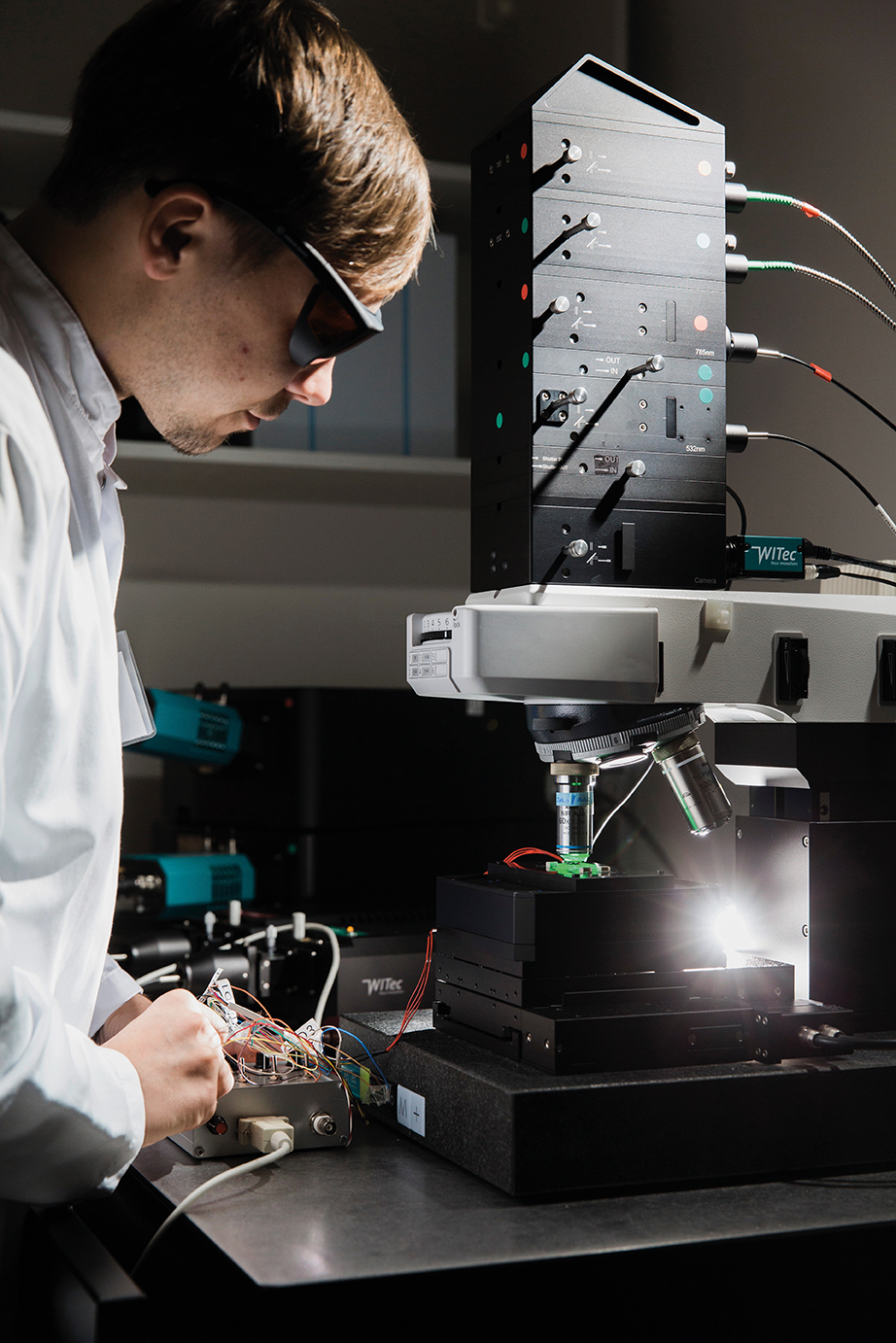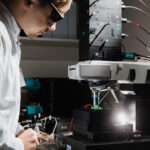- Home
- Research
- Spectroscopy and Imaging
- Research results
- Step Towards Clinical Application
Step Towards Clinical Application

17.05.2021
European laboratories aim to create standards for Raman spectroscopy. To this end, Leibniz IPHT has initiated the largest cross-laboratory study to date
Is the tissue healthy or pathologically altered? Does the antibiotic work against the germ or is it resistant to it? With the help of Raman spectroscopy, such questions can be answered quickly and precisely. However, one challenge for the use of the light-based analysis method in everyday clinical practice is that the results depend sensitively on the respective measurement conditions. In order to create solutions for this challenge, Leibniz IPHT has initiated the largest European cross-laboratory study to date.
Using Raman spectroscopy, biological samples in diagnostics, microbiology, forensics, or pharmacology can be precisely characterized via the unique fingerprint of the molecules. “However, the results also contain other fingerprints: those of the measurement system, for example, the Raman spectrometer,” explains Thomas Bocklitz, head of the “Photonic Data Science” research department. For example, the same sample can lead to different Raman spectra if it is measured with different setups, under different conditions or at different times, says Bocklitz, who also works at Friedrich Schiller University in Jena.
At the initiative of Leibniz IPHT, 86 researchers from 15 institutions in seven European countries have now put the comparability of Raman spectroscopic devices with different configurations to the test. The European Union funded the project “Raman4Clinics” as a COST Action (European Cooperation in Science and Technology). With the largest laboratory comparison of Raman spectroscopy experiments to date, the study is an important step toward bringing Raman spectroscopy into clinical applications, said Jürgen Popp, spokesman for the
“Raman4Clinics” consortium.
Open source crucial for common standards
The team’s conclusion is a clear recommendation to both spectrometer manufacturers and the scientific community of Raman spectroscopy. “Manufacturers and scientists should perform spectrometer calibration as standard and make the corresponding software modules open source,” says Thomas Bocklitz. This, he said, is a viable and attractive first step to correct for the influence of measurement-related effects on Raman signals.
It is also crucial, he says, that both manufacturers and researchers make their data openly available. “We encourage scientists to actively contribute to building larger databases,” Thomas Bocklitz appeals. “This would be an enormously valuable resource for building machine learning models and chemometric methods that are tolerant of undesirable variations.”
The results of the research team, which is now looking at complex biological samples after studying simple substances such as polystyrene and paracetamol, will be incorporated into the National Research Data Infrastructure (NFDI). This networked structure, funded by the German Research Foundation (DFG), is designed to systematically develop, sustainably secure, and make accessible the data holdings of science and research.
“Our data contribute to achieving uniform standards for Raman spectroscopy,” explains Bocklitz, who is an official participant in the NFDI’s chemistry consortium (NFDI4Chem). The goal is to get internationally binding protocols for Raman spectroscopy off the ground. “We hope that our study will encourage the scientific community of Raman spectroscopy to commit to such common standards,” Thomas Bocklitz emphasizes. “Only then can we realize the full potential of this powerful non-invasive method for clinical applications.”
New Standard Tool for Microbiology
Learning what happens when microorganisms interact with each other or with more highly developed organisms can be very valuable for humans. Bacteria, for example, often produce substances during such processes that could provide the basis for new drugs or antibiotics. To observe such processes, researchers use modern imaging techniques such as Raman spectroscopy.
To enable microbiologists at Friedrich Schiller University Jena to use this powerful technology to study biological samples and biomolecules, the research team in Jürgen Popp’s group is now providing them with a Raman microscope and supporting them in its use. The state of Thuringia is funding this with 400,000 euros as part of the project “Investigation of microbial interactions using Raman spectroscopy” – or “MICROVERSE-Raman” for short. The new Raman technology will be an essential building block in the “Imaging Center” of the Cluster of Excellence “Balance of the Microverse”, which provides various modern imaging techniques.

